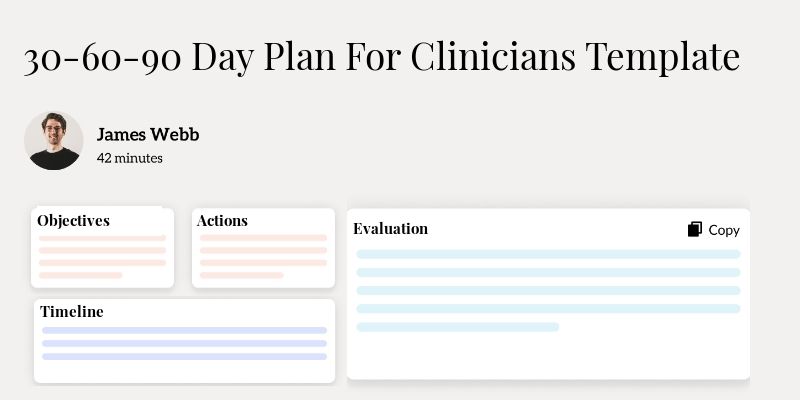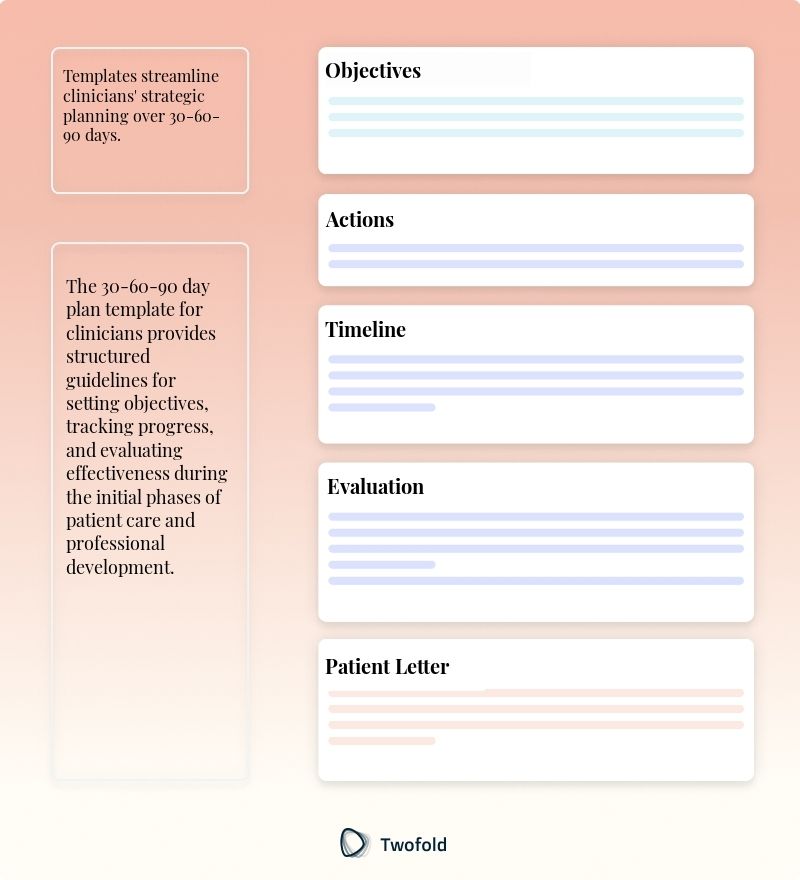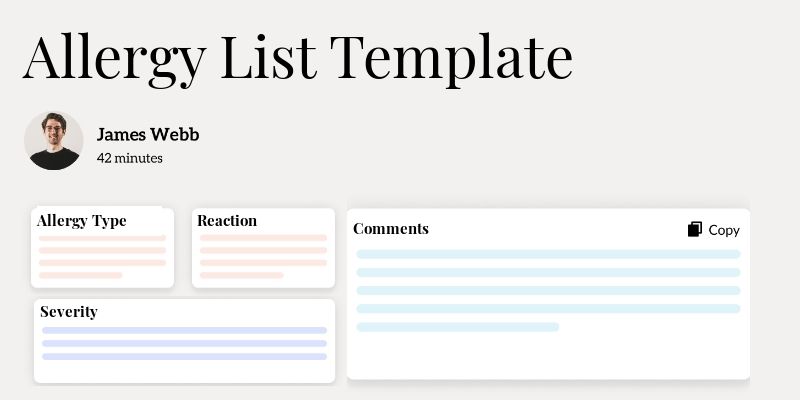
30-60-90 Day Plan For Clinicians Template
Hey there! If you’ve ever felt like you're juggling too many tasks without a clear roadmap in place, you're not alone. Clinicians often face the challenge of effectively managing their workloads while ensuring they continue to provide top‑notch care. Enter the 30‑60‑90 Day Plan for Clinicians Template. It's designed to help you prioritize tasks, outline your goals, and keep everything in focus. Let's investigate how this template can make a difference in your professional life.
What Is a 30-60-90 Day Plan For Clinicians Template?
A 30‑60‑90 Day Plan Template is a structured framework designed to help clinicians organize their tasks and professional development over a three‑month period. This template helps in setting clear milestones and objectives to improve efficiency and performance.
Primarily, this template helps clinicians focus on immediate priorities, plan for near‑term goals, and establish long‑term objectives. It supports a methodical approach to transition or tackle new responsibilities effectively.
Key Components of a 30-60-90 Day Plan For Clinicians
A well‑crafted plan should include the following components:
- Defined Objectives: Specific goals for each 30-day period.
- Action Steps: Tasks necessary to achieve set goals.
- Success Metrics: KPIs or benchmarks to measure progress.
- Support Resources: Tools and personnel that aid in achieving objectives.
- Review Points: Scheduled assessments to evaluate ongoing progress.

How to Use a 30-60-90 Day Plan for Clinicians Template: Step-by-Step Process
Step 1: Establish Initial Objectives
Before diving into action, start by identifying clear objectives you aim to achieve in each 30‑day section. Set priorities based on urgency and importance.
Step 2: Develop Action Plans
List down the key tasks and activities under each objective. Detail what needs to be done and allocate timeframes for each task.
Step 3: Define Success Metrics
For each set objective, determine how success will be measured. Use quantitative methods where possible for clear assessment.
Step 4: Plan Regular Reviews
Create checkpoints at 15‑day intervals to check progress, make necessary adjustments, and re‑align resources if needed.
Step 5: Seek and Implement Feedback
At the end of each 30‑day period, gather feedback from peers and supervisors and integrate it into the next phase of your plan.
Benefits of a 30-60-90 Day Plan For Clinicians
Benefit | Description | Impact |
|---|---|---|
Goal Clarity | Provides a structured roadmap for clinicians. | Increased focus and direction in tasks and objectives. |
Task Prioritization | Promotes efficient time and priority management. | Optimized work processes and reduced burnout. |
Progress Tracking | Enables measurable assessment of achievements and areas for improvement. | Enhanced accountability and motivation. |
Feedback Loop | Facilitates continuous improvement through timely feedback. | Better alignment with team objectives and personal development. |
Stakeholders in 30-60-90 Day Plan For Clinicians
This template involves several key stakeholders who play a role in its effectiveness and success:
- Clinicians: Primarily responsible for creating and implementing the plan. For instance, a physician adapting to a new department might use it to learn new protocols efficiently.
- Supervisors: Provide insight and feedback on progress and suggest improvements. An experienced manager might help a clinician set realistic expectations and milestones.
- Administrative Staff: Offer logistical support to ensure resource availability. For example, coordinators can arrange for necessary training sessions outlined in the plan.
- Peer Clinicians: Act as a support network for feedback and advice. Peers who have successfully used the plan can offer valuable tips and encouragement.
Example of a 30-60-90 Day Plan For Clinicians PDF
To illustrate the structured approach, a downloadable PDF example is often used to highlight key areas for focus in each time segment.
Real-World Use Cases: Practical Impact of the 30-60-90 Day Plan For Clinicians Template
The template's practicality shines through in varied real‑world situations:
- When Dr. Green was transitioning to a new practice, the 30-60-90 day plan helped her quickly get familiar with new workflows and patient demographics, enhancing her efficiency.
- During residency, a group of interns coordinated their learning plans using the template to ensure balanced patient care and educational outcomes.
- In response to a departmental shift, the nursing team at General Hospital adopted the plan to realign their responsibilities, which led to noticeable improvements in team coordination and patient care.
Conclusion
The 30‑60‑90 Day Plan for Clinicians Template offers a systematic approach for navigating through various phases of professional development. By setting clear goals, establishing action steps, and embedding feedback and review processes, clinicians can optimize their workflows and enhance their professional growth. This comprehensive template serves as a reliable tool not just for newcomers adapting to new roles but also for seasoned practitioners aiming for continued improvement.
Disclaimer: This article is for informational purposes only and does not constitute legal or medical advice. Always consult professional guidelines and regulatory bodies for specific compliance requirements.

Dr. Danni Steimberg
Dr. Danni Steimberg is a pediatrician at Schneider Children’s Medical Center with extensive experience in patient care, medical education, and healthcare innovation. He earned his MD from Semmelweis University and has worked at Kaplan Medical Center and Sheba Medical Center.
A clinician’s first quarter sets the tone for long‑term impact. The STEER roadmap—Start‑up goals, Training milestones, Engagement metrics, Efficiency wins, Refinement targets—keeps each 30‑day segment focused and measurable.
- Start-Up & Training (Day 1-30): Define baseline competencies and complete key trainings (e.g., EHR workflows, billing protocols) to build rapid confidence.
- Engagement & Efficiency (Day 31-60): Track patient-experience metrics and streamline documentation time—early wins that prove value to both patients and leadership.
- Refinement & Expansion (Day 61-90): Analyze outcome data, refine workflows, and outline growth projects (new service lines, research initiatives) to demonstrate forward momentum and justify ongoing support.
Frequently Asked Questions
Reduce burnout,
improve patient care.
Join thousands of clinicians already using AI to become more efficient.

Blank SOAP Note Template
Discover practical Blank SOAP Note Template to enhance your documentation efficiency.

Couples Therapy Note Template
Discover practical Couples Therapy Note templates to enhance your documentation efficiency.

Allergy List Template
Discover practical Allergy List Template templates to enhance your documentation efficiency.

